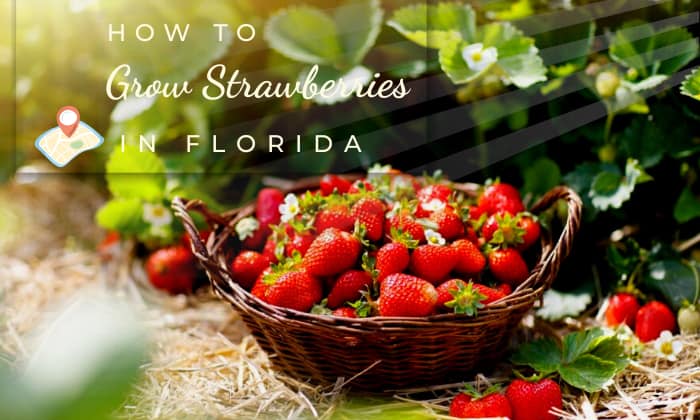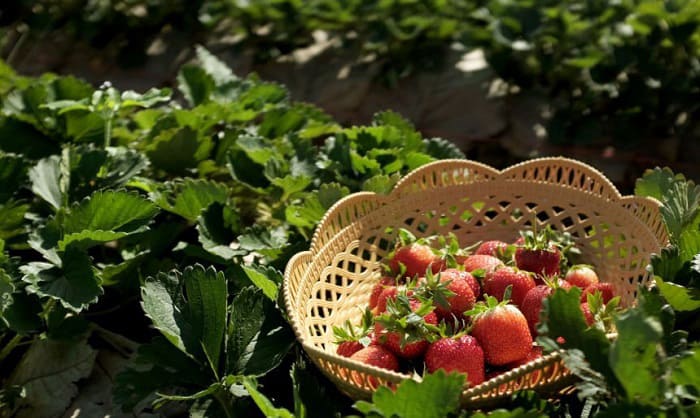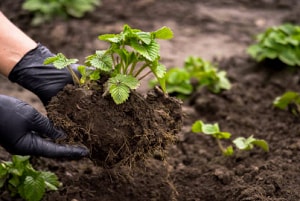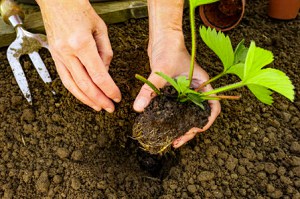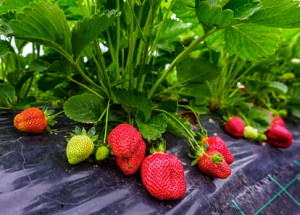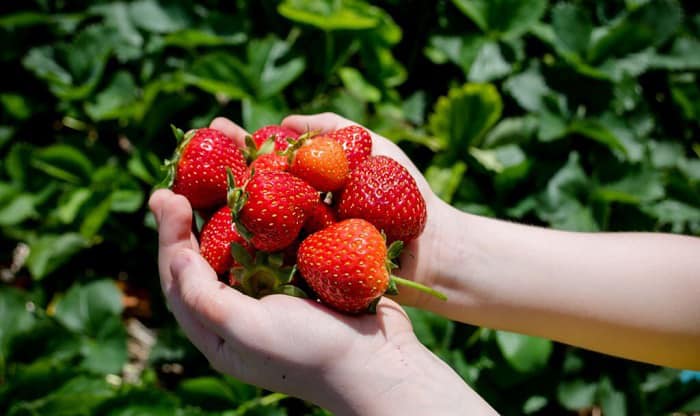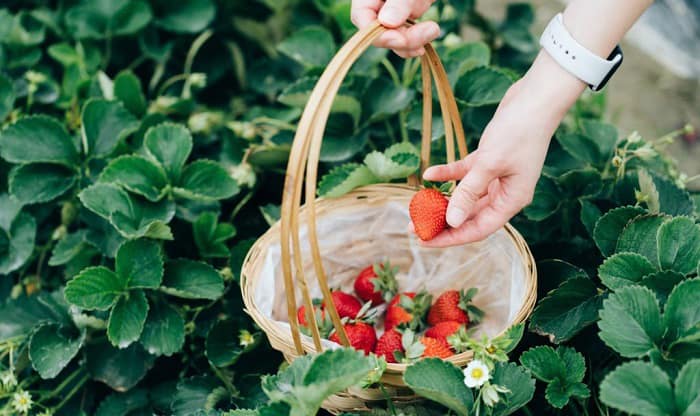Did you know Florida produces the most strawberries in the US, second only to California?
This is all thanks to the state’s favorable climate, which allows strawberries to grow from fall to spring, with only a short period of growth disruption during winter.
If you live in the Sunshine state, you may wonder how to grow strawberries in Florida. In that case, read through our tips below.
Table of Contents
What You Need
To plant strawberries in Florida, you should prepare the following:
- Strawberry transplant
Floridians often grow strawberries from two types of transplants instead of from seed.
- The first type comes from runners, and they’re often available in nurseries as bare roots with leaves, which encourage early yield.
- The second type you can get is the plug transplant. It grows more quickly and doesn’t require overhead sprinklers like the bare root variety, making it more suitable for first-time gardeners. However, plug transplants are more expensive.
The best time to plant both strawberry types is around late September to October.
Read more: Best time to cut strawberry runners from the mother plant.
- Raised beds
Raised beds allow for adequate drainage during fall and spring, when there’s rain in Florida. It is also beneficial to mulch the raised beds with black polyethylene sheets and space the plant rows 12 inches apart.
- Soil with a pH of 6.5 to 7.0
- Micronutrient-rich 10-5-10 fertilizer
Prepare 1 pound of fertilizer for every 5 feet of garden space. The fertilizer should be 100% slow-release, but aim for 50% if that’s not possible. Such formulation helps prevent fertilizer burn, which can result in discolored leaves and possible plant death.
- Rake
- Trowel
- Water hose
- Frost cloth
Steps for Growing Strawberries in Florida
Step 1. Prepare the planting location
Strawberries need full sun, so the best place to plant strawberries must receive a minimum of eight hours of direct sunshine per day. It should also have the pH, drainage, and spacing we described above.
Once you’ve determined the location of your garden bed, apply fertilizer in the aforementioned quantity and distribute it evenly across the soil.
However, if you have an irrigation system set up, spread 75% of the fertilizer along the drip line. The remaining 25% doesn’t need to concentrate in one area; just sprinkle it everywhere.
Then, dig holes as deep as the strawberry roots and space them twenty inches apart. In addition, every row should be 4 feet away from another.
Step 2. Plant strawberries
Pick up the strawberry transplants in containers and put them into the garden bed. Make some slits in the polyethylene mulch to accommodate them.
Then, water the soil immediately without wetting the plants’ foliage and continue to give the ground an inch of moisture per week.
For ideal growing conditions, the temperature for strawberries should be 50 to 80 degrees Fahrenheit. If you sense an upcoming freeze, cover the soil using a frost cloth and some ground stakes with support hoops.
Strawberry plant temperature tolerance may be as low as 20℉, but 32 degrees can already harm it. Hence, cold protection is necessary, considering fall is the strawberry plant season in Florida.
Step 3. Wait for the strawberries to grow and take care of pests if necessary
After planting, continue to satisfy strawberry sunlight requirements along with its watering needs. Note that fourteen hours of daylight are the maximum the plant should get, since excessive UV rays can affect the look and taste of the fruit.
As for pests, you should watch out for thrips and spider mites. I recommend using a neem pesticide or an insecticidal soap to control them. These products may also offer protection from aphids, fungi, and whiteflies, so they’re quite versatile.
To target fungal disease in particular, Captan is an excellent option. Gardeners can spray it every two to three weeks during dry weather and weekly when there’s a lot of rain.
However, Captan doesn’t treat powdery mildew, so get yourself some sulfur in that case.
Best Varieties of Strawberries to Grow in Florida
The best strawberry plants Florida farmers should grow are:
- Festival, Sweet Sensation Florida 127, and Florida Brilliance in central Florida
- Alpine in south Florida
- and Camarosa in north Florida
Other varieties to consider are Felicity, Medallion, Pearl, Sweet Charlie, Winterstar, and Elyana.
Note – It may be hard to find strawberry seeds for Florida, as gardeners here often use plugs and bare roots instead. If you want Camarosa strawberry seeds, you might have trouble acquiring them.
However, an exception to this rule is Alpine strawberries, which people often grow from seeds.
When Do You Harvest Strawberries in Florida?
You should harvest them when the fruits are 75% red – this usually falls around February or March in Florida. If you leave them on the plants for longer, the strawberries will be sweeter, but you’ll have to eat them more quickly to prevent rotting.
Plus, early harvesting means less work in protecting the plants from birds.
When collecting strawberries, pick a cool period of the day, like early morning or evening, and pluck from the stem to avoid bruising the fruit. Then, store the strawberries in the fridge if you can’t eat them right away.
FAQs
How long does it take to grow strawberries in Florida?
Growing strawberries will take around 90 to 110 days or around three to four months.
Hence, if we take into account when to plant strawberries in Florida, or a gardening time of September to December, the fruits will finish growing around November to March.
How do you take care of strawberry plants in Florida?
Aside from the tips we shared above, keep the following in mind:
- Place the strawberries deep enough into the soil so that they don’t fall over, but ensure the crown stays above ground to prevent rot.
- Remove weeds whenever they appear.
- Keep strawberries away from nightshade, brassica, melon, okra, and rose plants. Doing so will lessen the risk of disease and free your strawberries from having to compete with other crops for nutrients.
- Use bird netting to ward off avians. This net is widely available for purchase and often customizable in terms of size. It is also waterproof and easy to secure with nails or stones.
Can I grow strawberries from a strawberry?
Yes, you can. Here are some basic steps for doing so:
- Cut a strawberry into slices; be careful not to scrape the seeds or the yellow dots on the fruit’s skin.
- Let the slices dry overnight.
- The next day, prepare a soil container to hold the strawberry. Make sure to position the slices so the seeds will be facing up. Don’t bury the fruit; just put a light layer of soil on top of it before watering.
- Afterward, keep the container in a place with sunlight and wait for germination.
- Once there are leaves, you can transplant the strawberry into the garden outside.
Conclusion
Strawberries taste best when they’re fresh, and if you’ve ever compared a supermarket strawberry to a farm-fresh one, it’s easy to recognize the difference.
So, learn how to grow strawberries in Florida here, and hopefully, you’ll have a basket of these sweet, succulent fruits to enjoy next season.

Hi, I am William – Floridayards’ digital content creator. My job is to find answers to all your concerns with thorough research and our team’s expert advice. I will also bring you honest reviews on the best products and equipment for raising your beautiful garden. Please look forward to our work!


